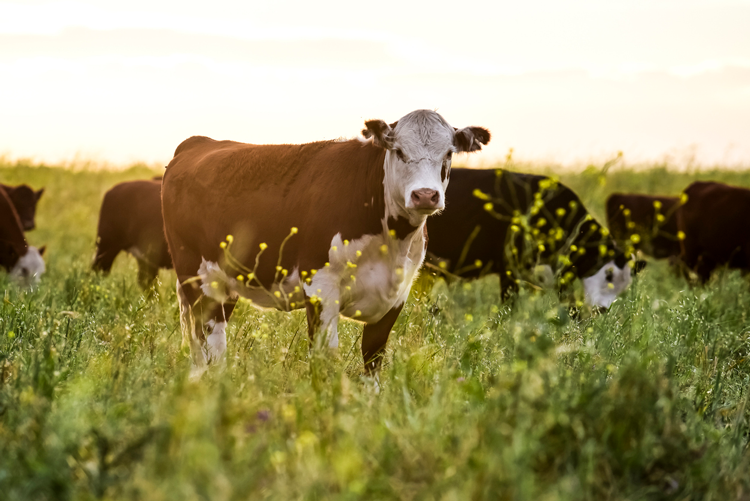
Have you ever wondered how all those cattle dung patties simply disappear from one year to the next? What is the fate of all of that urine being deposited on the pasture where sheep are grazing? Well, it takes an army of organisms feeding on those dung pats and urine spots to consume these deposits and make them useful.
Those organisms might initially be dung beetles, flies, earthworms, and nematodes that feed on the raw feces to feed their broods in and under the pasture party platters. Ultimately, though, it will be the vast array of soil bacteria, fungi, and actinomycetes consuming these organic resources that are necessary to keep a pasture healthy. This is not meant to be a story of vulgarity, but one that covers the natural processes of life in the pasture.
A natural process
Excrement from livestock on pastures is an important part of the sustainability of the pasture ecosystem. Ruminants are able to digest large portions of the plants they eat, but there are also portions that are indigestible and not transformed into usable forms of energy and nutrients, and therefore, must be excreted. These “wastes” are then deposited onto the pasture and enter another phase of nutrient recycling.
What is the nutrient content of dung and urine? Typical ranges can be considered for livestock excrement, but know that the quality of the diet can affect these contents. For instance, cattle and sheep dung contain approximately 1% total nitrogen, while cattle urine contains about 0.5% total nitrogen and sheep urine contains about 0.75% total nitrogen. On a daily basis, a mature cow may excrete 0.6 pounds of nitrogen, 0.1 pound of phosphorus, and 0.4 pounds of potassium.
Most of the nitrogen contained in urine is urea, which can be relatively quickly transformed into ammonia (NH3) in the presence of urease enzymes that are typically abundant in soil and plant tissues. Under neutral to alkaline soil conditions, the production of ammonia can lead to gaseous loss of nitrogen from the pasture, or volatilization. Under acidic soil conditions and when protected from gaseous loss in and around soil particles, ammonium (NH4) is formed and nitrogen is conserved.
Nitrogen that is released as ammonium and nitrate (NO3) in soil water can then be absorbed by plant roots for new growth. This process of plant growth, livestock consumption, ruminant digestion, excretal deposition, soil microbial transformation, and plant uptake of inorganic nitrogen is the basis of pasture nutrient cycling. It’s a natural process that proceeds whether you understand the chemistry or not; however, the more you understand each step, the more you may be able to manipulate the gains and losses within your pasture ecosystem.
For example, cattle that are allowed to congregate in a corner of the pasture where hay is frequently fed will preferentially excrete nutrients in that part of the pasture and not in others. Alternatively, allocating small portions of the pasture on a daily or weekly basis with temporary fencing will lead to more uniform distributions of excreted nutrients across the entire pasture over the course of the year.
Nitrogen mineralization
The conversion of organic nitrogen present in dung and urine to mineral nitrogen (ammonium and nitrate) that can be absorbed by plant roots is called mineralization. In soil research, nitrogen mineralization can be determined in the field to understand how plant and environmental conditions affect this process. This is laborious and dependent on variable conditions.
Another approach to determine soil nitrogen mineralization entails collecting soil from the field and incubating it in the laboratory under standard conditions of optimum moisture and temperature. This latter approach may be termed “potential nitrogen mineralization” since environmental limitations are not imposed. It can be conducted at a lower cost for many more soil types and conditions than field-based approaches.
Potential nitrogen mineralization of soils can vary from low levels of less than 40 pounds of nitrogen per acre per year to very high levels of greater than 120 pounds of nitrogen per acre per year.
According to a study across 95 pasture fields in central and western Virginia, potential nitrogen mineralization was 94 to 169 pounds of nitrogen per acre per year. These elevated levels indicate that good grazing practices can enrich soil and lead to nitrogen-sufficient conditions for years.
This is not to say that all managed grazing will lead to this outcome, but assessing soil health conditions of your pastures may foster a better understanding of how effectively nutrients are recycled from pats and pee to plants.
This article appeared in the January 2025 issue of Hay & Forage Grower on page 9.
Not a subscriber?Click to get the print magazine.

